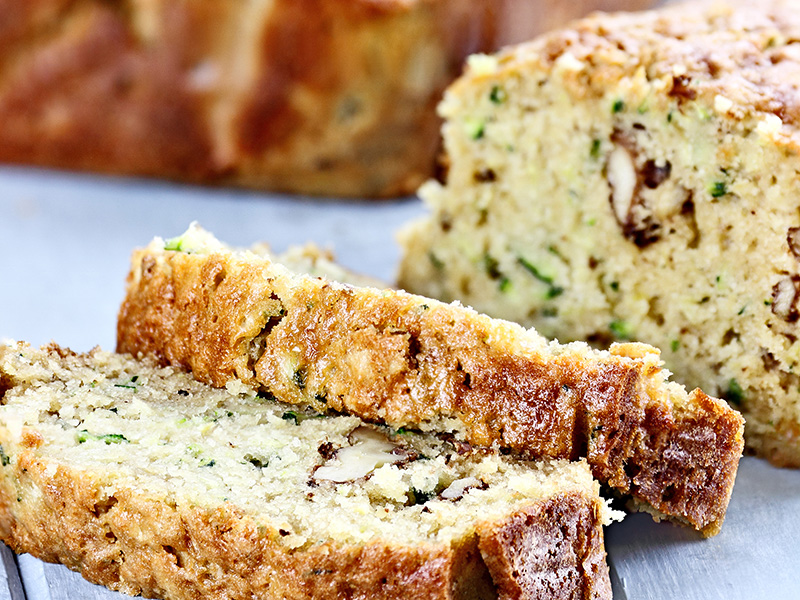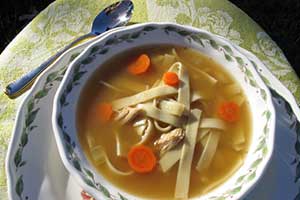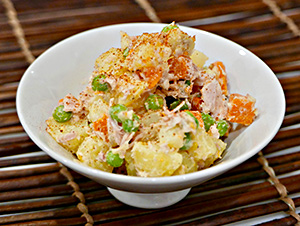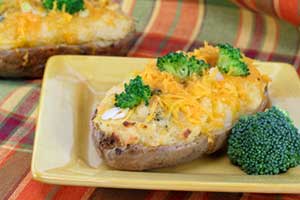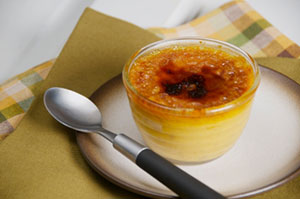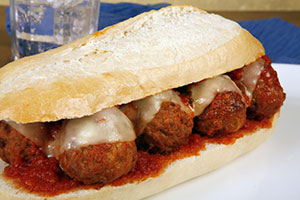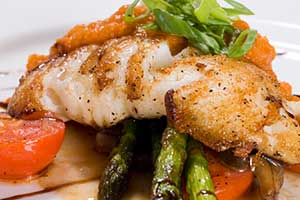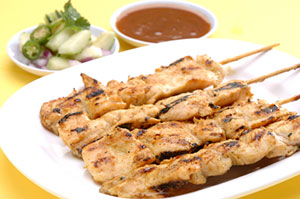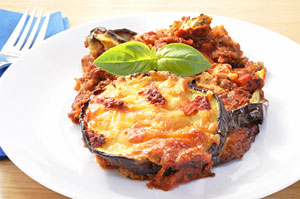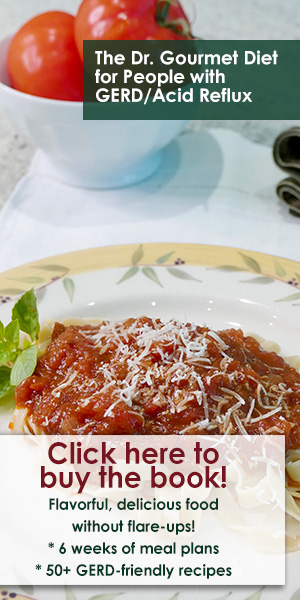Eating for GERD (Gastroesophageal Reflux Disease) or Acid Reflux
Gastroesophageal Reflux Disease (GERD) can be a challenge for a lot of folks. For some people being overweight can be a trigger. For others it may be certain foods that are problematic. The good news is that information on the Dr. Gourmet website can help you with both food triggers and weight loss.
There are recipes in this GERD section that use ingredients that might trigger GERD symptoms for one person but not another. For example, many people will have problems with raw onions and peppers, but they are fine if the onions and peppers are cooked. Careful experimentation with what works for you is the key. It may not be the onions and peppers in Mexican food that bother you, for example, but the fact that they are usually cooked with more fat. Or it could be spices such as cayenne pepper. I have included a Fajita recipe that cuts the amount of fat used to cook the onions. It also eliminates the cayenne pepper, and this might work for you.
Five Steps to Reduce Acid Reflux
If you have GERD / Acid Reflux, our online guide, Eating to Prevent GERD, can help. This guide includes information on how to eat, recommendations for lifestyle change, and Tummy Tips to help you live a pain-free life and prevent Acid Reflux.
Get started reading Eating to Prevent GERD with Step One: The GERD Friendly Breakfast »
Healthy GERD-Friendly Recipes
Breakfast Recipes
Egg dishes, smoothies and more. Start your day right!
Blueberry Muffins
Buttermilk Pancakes
Jean's French Toast
Scrambled Eggs
Classic Shredded Hash Browns
See
All GERD / Acid Reflux Safe Breakfast Recipes »
Soup Recipes
Familiar favorites like Chicken Noodle Soup to new tastes like Roasted
Eggplant Soup.
Butternut Squash Soup
Chicken and Black-Eyed
Pea Soup
Lentil and Chickpea Soup
Turkey White Bean Soup
See all GERD / Acid Reflux
Safe Soup Recipes »
Salad Recipes
Delicious composed salads, side salads and salad dressings.
Chinese Chicken Salad
Iceberg Wedge Salad with
Blue Cheese Dressing
Seared Salmon and Chick
Pea Salad
Udon Noodle Salad with
Salmon
See
all GERD / Acid Reflux Safe Salad Recipes »
Sides & Extras Recipes
Vegetable side dishes, starches such as rice and potatoes and more. See all GERD / Acid Reflux Safe Side Dish Recipes »
Dessert Recipes
Classic desserts such as Creme Brulee along with Whipped Cream and more.
Creme Caramel
Orange Sherbet
Pumpkin Crème
Brûlée
Sweet Potato Tarts
See all GERD / Acid Reflux Safe Dessert
Recipes »
Beef / Pork Recipes
Savor the flavors of beef, lamb and pork with these easy, satisfying recipes:
Chicken Fried Steak
Flank
Steak with Blackberry Glaze
Kung Pao Beef
Pork Chops with
Caramelized Apples
Pasta Carbonara
GERD
/ Acid Reflux Safe Beef and Pork Recipes »
Fish / Shellfish Recipes
Delicious shrimp, scallops, halibut, tuna and more.
Ginger Papaya
Whitefish
Crunchy Peanut Shrimp
Maple Glazed Salmon
with Lentils
Pecan Crusted Trout
Salmon Mac and Cheese
See
all GERD / Acid Reflux Safe Fish and Shellfish Recipes »
Chicken / Turkey Recipes
Quick chicken favorites and classic turkey recipes can be safe for those
with reflux.
Cashew Chicken
Chicken Parmesan
Chicken Tetrazzini
Healthy Buttermilk Fried Chicken
See All GERD / Acid Reflux Safe
Poultry Recipes »
Vegetarian Recipes
Low-Acid Tomato Sauce, pastas and risotto dishes make meatless delicious.
Cauliflower Steak
Creamy
Mac and Cheese
Fettucine
Alfredo
Gnocchi | Gluten-Free
Gnocchi
Lentil and Chickpea Soup
See all GERD / Acid Reflux Safe Vegetarian
Recipes »
What Foods Are GERD / Acid Reflux Triggers?
The most common foods that people complain of include:
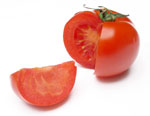 Whole milk products
Whole milk products
Acidic fruits and juices (orange, grapefruit, pineapple and lemon)
Onions
Tomatoes
and tomato products
Vinegars or foods cured in vinegar (pickles, relish)
Foods very high in sugar
Fatty meats
Fried foods
Recipes that are very high in fat
Alcohol
Coffee
Tea
Carbonated sodas
Spicy foods
Peppermint
Chocolate

